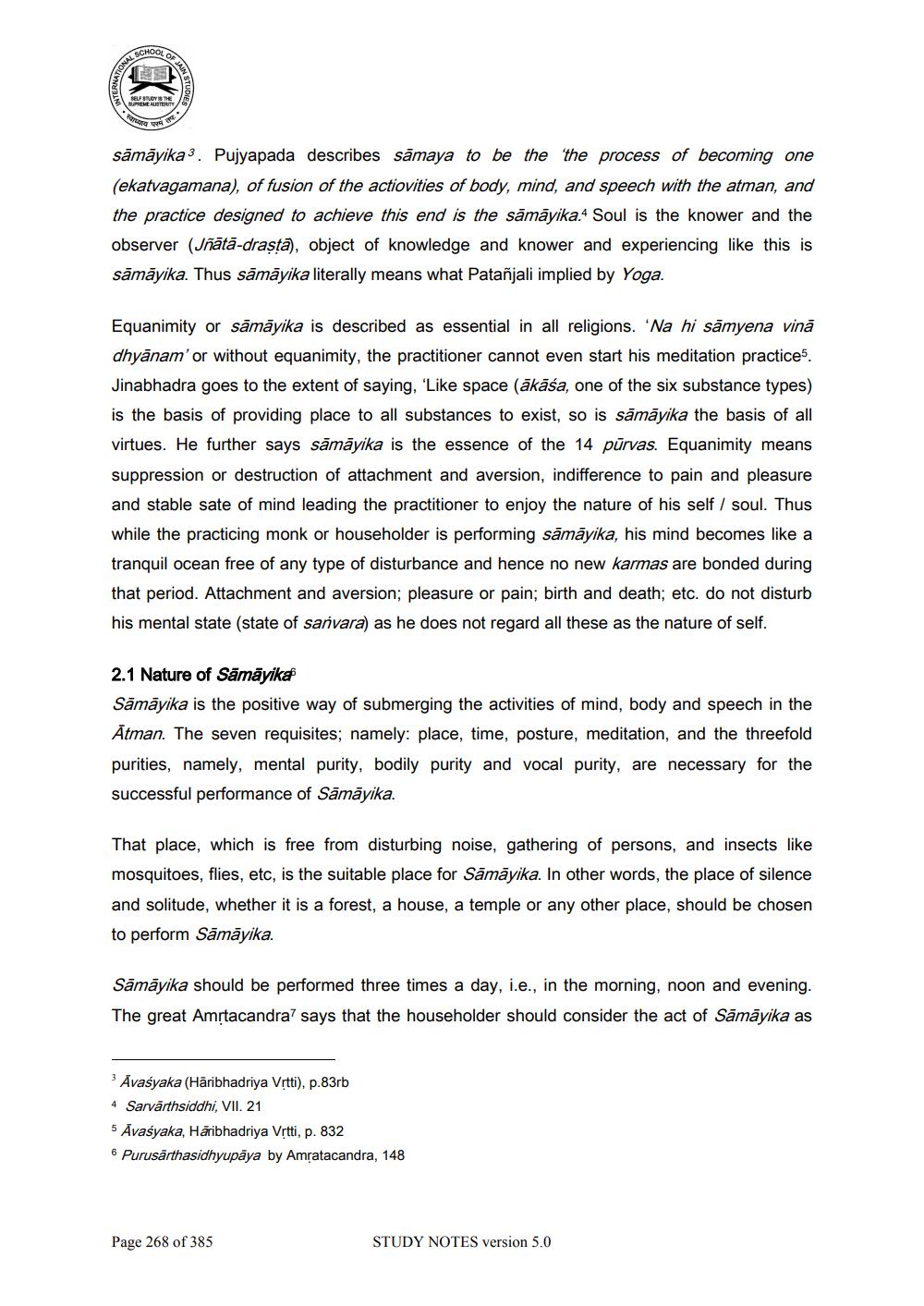________________
INTERNATION
SCHOOL
OF
SELF STUDY IS THE
SUPREME AUSTERITY
स्वाध्याय परम
STUDIES
sāmāyika3. Pujyapada describes samaya to be the the process of becoming one (ekatvagamana), of fusion of the actiovities of body, mind, and speech with the atman, and the practice designed to achieve this end is the sāmāyika. Soul is the knower and the observer (Jätä-drasta), object of knowledge and knower and experiencing like this is sāmāyika. Thus sāmāyika literally means what Patanjali implied by Yoga.
Equanimity or sāmāyika is described as essential in all religions. 'Na hi samyena vinā dhyānam' or without equanimity, the practitioner cannot even start his meditation practices. Jinabhadra goes to the extent of saying, 'Like space (ākāśa, one of the six substance types) is the basis of providing place to all substances to exist, so is sāmāyika the basis of all virtues. He further says sāmāyika is the essence of the 14 pūrvas. Equanimity means suppression or destruction of attachment and aversion, indifference to pain and pleasure and stable sate of mind leading the practitioner to enjoy the nature of his self / soul. Thus while the practicing monk or householder is performing sāmāyika, his mind becomes like a tranquil ocean free of any type of disturbance and hence no new karmas are bonded during that period. Attachment and aversion; pleasure or pain; birth and death; etc. do not disturb his mental state (state of sarvara) as he does not regard all these as the nature of self.
2.1 Nature of Samayika
Sāmāyika is the positive way of submerging the activities of mind, body and speech in the Atman. The seven requisites; namely: place, time, posture, meditation, and the threefold purities, namely, mental purity, bodily purity and vocal purity, are necessary for the successful performance of Samayika.
That place, which is free from disturbing noise, gathering of persons, and insects like mosquitoes, flies, etc, is the suitable place for Sāmāyika. In other words, the place of silence and solitude, whether it is a forest, a house, a temple or any other place, should be chosen to perform Sāmāyika
Sāmāyika should be performed three times a day, i.e., in the morning, noon and evening. The great Amṛtacandra? says that the householder should consider the act of Sāmāyika as
3 Avasyaka (Haribhadriya Vṛtti), p.83rb
4 Sarvarthsiddhi, VII. 21
5 Avasyaka, Haribhadriya Vṛtti, p. 832
6 Purusārthasidhyupaya by Amṛatacandra, 148
Page 268 of 385
STUDY NOTES version 5.0




